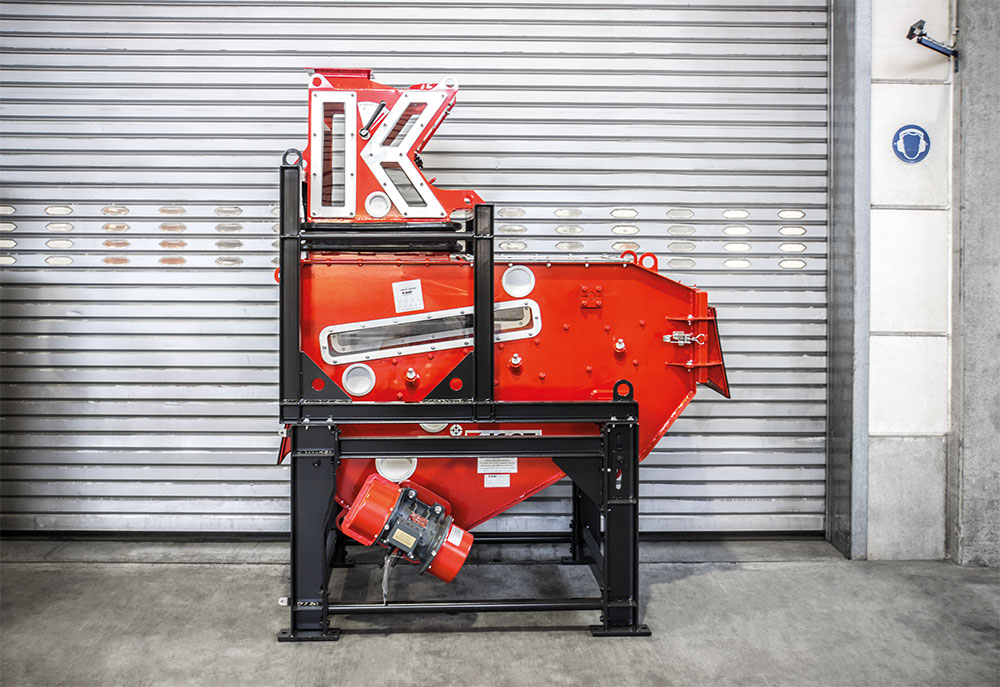RECYCLING
The right combination – the K-Sifter in combination with the Air Separation Table

JOEST has been supplying vibration technology for ninety-five years – and that means ninety-five years of experience in the design and production of vibratory machines.
Fields of production, customers’ requirements, machines and technologies have continuously changed and/or improved during the last decades, and totally new market segments and opportunities have been established. Continuous improvements of preparation processes and technologies and great flexibility in responses to rapidly changing requirements resulting from changing flows of materials, are a vital necessity especially in the recycling sector.
In recent years, JOEST has invested a great amount of research effort in the further development of both vibration technology and air-separation systems.
The latest development now consists of a combination of two separation technologies. The K-Sifter in combination with the Air Separation Table.
Read the complete interview about this new technology here.
Weitere Beiträge
As part of the JOEST group, MOGENSEN has been a trusted provider of high-performance screening and sorting technologies for many years. The new website now showcases this expertise more clearly and with a modern touch.
On International Women’s Day, we celebrated the great women in our company who have made a significant contribution every day with their commitment, expertise and passion. Their efforts have been a driving force behind our success and an inspiration to us all.
JOEST South Africa was commissioned to manufacture and supply replacement vibrating feeders for a critical power generation facility. The new units are designed to replace equipment that had been in operation for over 20 years, ensuring the continued reliability and efficiency of the plant.
MOGENSEN joins China’s food security project as an official supplier, supporting the nation’s plans to strengthen domestic grain production capabilities. The appointment by COFCO, China’s largest state-owned agricultural company, includes the deployment of multiple precision screening systems for processing rice, wheat and soybeans, among other grains. This long-term initiative is in line with China’s new food security law, which went into effect on June 1, 2024.





